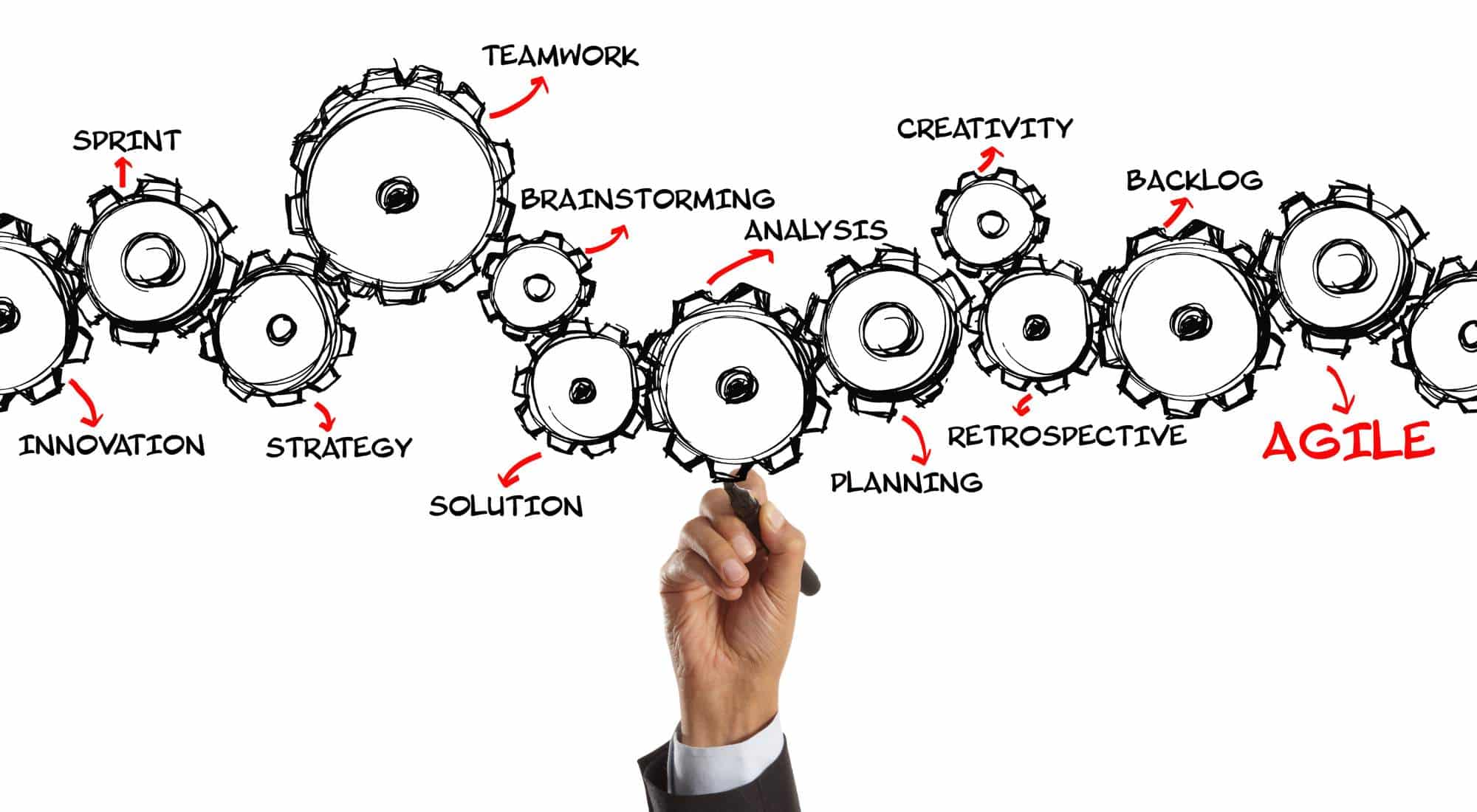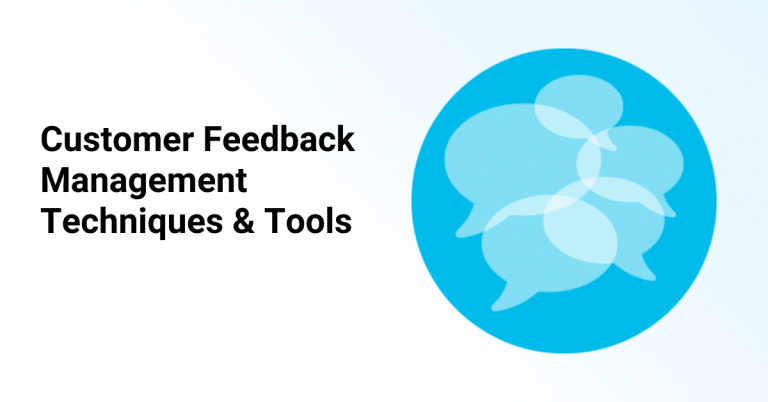You have an innovative concept for a cutting-edge piece of software you know can break into the market. The problem is that the idea of creating this software from inception to completion is completely overwhelming, so it gets pushed to the back burner.
This does not have to be the case. The traditional method of releasing a new product into the digital market is not your only option. Choosing an agile release cycle for your project may be the right fit, especially if flexibility and adaptability are a priority for you and your team.
Read ahead to learn about an agile release cycle and how it can benefit you as you dive into your next project.
Table of Contents
- Defining the Agile Release Cycle
- What Are the 5 Stages of the Agile Life Cycle?
- Benefits of the Agile Release Cycle
- Challenges and Solutions in Implementing Agile Release Cycles
- Best Practices for Optimizing Your Agile Release Cycle
- AnnounceKit: Keeping Your Customers Informed at Every Stage of the Agile Release Cycle
Defining the Agile Release Cycle
As you’re going over your goals during the software development life cycle, you’ll come to a point where you have to decide if an agile release cycle is the method that will best suit your needs.
When it comes to introducing your software or product, you want to get it out there in a timely manner without compromising quality and neglecting risks. This is where agile release cycle methods come in.
The agile release cycle is a project management technique that focuses on introducing your software to users in stages rather than one big launch that can take longer to complete. The agile release cycle uses a 1-2 week cycle known as a sprint to achieve this goal.
With an agile development release cycle, you can get your software out to consumers quickly and in more manageable parts for them. The user reaps the benefit of timelier updates and launches, and the developer reaps feedback benefits to improve the product continuously.
The success of each stage is measured by delivering the features of a product rather than the completion of the project as a whole.
AnnounceKit provides tools you can use to facilitate communication with your team and consumers to get those features delivered in a timely and precise manner.

Quick Setup, Easy to Use, and Many Integrations
Manage your product announcements from a single place and easily distribute them
across multiple channels.
What Are the 5 Stages of the Agile Life Cycle?
The agile release lifecycle has five distinct chronological stages. Different terms are used interchangeably to describe these five stages, but all are synonymous with each other, and for the most part, they encompass the same processes at their core:
- Planning
- Development
- Testing
- Release
- Feedback
#1: Planning: Setting the Stage for Success
As with any project, it is important to start by collaborating with everyone involved to make sure there are clearly defined objectives. The project manager, product owner, and client must be on the same page at the start to ensure everything is accomplished efficiently and accurately.
Things that are discussed and reviewed during this planning and project initiation stage are:
- Goals and end visions
- Justifications for the project
- Expected outcomes
- Return on investment (ROI)
- Timelines for releases
- Potential costs of future projects
- Resources needed
Having a solid framework for your project is imperative for its success. Thankfully, different project management tools can support your team and make sure everyone is on the same page every step of the way.
One tool that is commonly used is Jira. Jira is a tool that has features such as Kanban boards catered explicitly to the success of teams and projects using an agile release cycle.
Another project management tool that can be useful for agile release cycle projects is Trello. Trello is great for those just getting started. It isn’t as feature-heavy as Jira, but it is straightforward to use.
#2: Development: Iterative Progress With Sprints
Once you and your team have clearly defined goals and requirements, the magic starts to happen. The development stage is your jumping point, where you and your team hit the ground running.
The primary difference between agile and traditional release projects is the focus on delivering quality features in smaller increments, known as sprints and iterations. These incremental or iterative phases thrive on the collaboration of all those involved in the project.
Sprints typically last 1-2 weeks and are smaller, more manageable goals within the project. Speed and faster releases result from working in sprints, but they are not the only advantages. Sprints inherently provide momentum and focus to a project, leading to efficient releases.
There are several outcomes of working in sprints:
- Get started: When you have a big project, it can be paralyzing when you look at everything you have to do. Smaller sprints make the project less overwhelming and allow you to get started and gain momentum.
- Go from abstract to concrete: Sprints allow you to take your ideas from theories and possibilities to actualities. So many projects and ideas never move past the theoretical phase and essentially get stuck in the idea stage. Sprints allow you to move seamlessly from the conceptual to the tangible.
- Stay focused: It’s easy to get distracted by the different moving pieces of a project. When your team can focus on a more narrow, manageable goal, it becomes easier to drown out the noise of everything else. It is also easier to collaborate with your team when they have a focused short-term goal to find solutions quickly when obstacles arise.
- Make decisions effectively: When working with a team, there will inevitably be differing opinions on what should be done or what works best. When working in sprints, your team can quickly test out all options and receive feedback on what achieved better outcomes instead of wasting time debating the theoretics of which option could be better.
- Incite faster follow-ups: The nature of your team working in a shorter fixed time frame will naturally compel everyone to work together to get things done by the deadline.
Working in sprints can apply to teams and organizations of all sizes, big or small. Just remember that the division of labor for these sprints should be equal and manageable so that no one team has too much or too little on their plate.
#3: Testing and Quality Assurance
The benefit of using an agile release cycle for your project is continuous flexibility and adaptation within your project. Testing and quality assurance of your product are critical to the success of each release.
The agile process’s testing and quality assurance methodology focuses on continuous integration and continuous testing. Constant testing and integration offer the highest quality product through:
- Routine code integration
- Automated testing
- Quick feedback
- Accountability and ownership of the product
It is important to test early and test often. Testing should be taking place every step of the way. The benefit of working in sprints is the ability to continuously test every time you make a fix, update, or enhancement. The perpetual cycle of testing enables ongoing quality assurance.
#4: Release: Delivering Value To Users
When releasing your product, you need to have a set plan defining what features will be released and when they will be released. Ensuring everyone on the team is on the same page for deadlines and goals will help make your releases run smoothly.
Since the agile release cycle consistently moves toward meeting sprint deadlines, automation can help the process run more efficiently. The continuous integration and continuous delivery (CI/CD) pipeline helps assist in the agile release process by making sure that as soon as changes are made, they can be integrated into the software immediately, automatically tested, and sent to production with no additional effort or time used.
With multiple updates in short periods of time, communication is your best friend when it comes to making sure your customers are aware of your most recent updates. To ensure they’re consistently notified of changes in a timely manner, use tools like the standalone changelog provided by AnnounceKit to keep your users up to date on the progress of your software.
#5: Feedback and Iteration
Feedback from users plays a critical role in the agile release cycle. There are several benefits to managing feedback on your product:
- Improved communication
- Improved productivity
- Enhanced customer satisfaction
- Faster issue resolution
Benefits of the Agile Release Cycle
A recent study in using a release cycle in agile format shows that this is an efficient method to keep up with the demands brought on by the fast-paced, modern-day software industry.
Faster Delivery
One of the main goals and benefits of using an agile release cycle is faster product delivery to consumers. Agile release cycles allow team members to prioritize tasks through sprints.
Improved Team Collaboration
The nature of the agile release cycle requires all stakeholders to work together to achieve a common goal within a foreseeable timeline. This continuous collaboration can lead to a higher-quality product released through an efficient process.
Better Alignment With User Needs
Being able to release your product in smaller increments more frequently allows users to interact and experience your software more regularly. This, coupled with utilizing their feedback, also makes them feel like they are part of the development process since their needs are being met.
Reduced Scope Creep
Scope creep happens when changes beyond the initial work established for a project occur. Scope creep is basically a detour that can delay production, exceed budget limitations, and misallocation of resources. These factors can ultimately result in project failure. Scope creep can be the cause of delays, conflict, and confusion.
Agile release cycle projects can benefit from reduced scope creep by setting clear definitions and expectations every step of the way. Smaller sprints allow for more control and better-managed expectations by sticking to a clearly defined roadmap at each iteration instead of a broader, more overwhelming roadmap for an entire project.
Challenges and Solutions in Implementing Agile Release Cycles
Projects completed using agile release cycles aren’t perfect and come with their own set of challenges. This doesn’t mean this project management method is any better or worse than others; it’s just unique. It’s essential to be aware of these so that you can address them if and when they come up.
Some of the common challenges reported include:
- Scope creep management
- Team alignment
- Quality maintenance
The continuous development and changes with each sprint make scope creep possible. The flexibility inherent to agile release cycle projects is a double-edged sword. If this flexibility is not appropriately managed, then the potential for too much leeway arises.
Team alignment, or misalignment, can contribute to introducing scope creep.
The many features offered by AnnounceKit can help mitigate many of the challenges unique to the agile release cycle project.

Quick Setup, Easy to Use, and Many Integrations
Manage your product announcements from a single place and easily distribute them
across multiple channels.
Best Practices for Optimizing Your Agile Release Cycle
When making the most efficient use of agile release cycles, some standards and practices can help ensure the desired outcome.
Foster Clear Communication and Collaboration
The methods of an agile release cycle open up the communication and transparency between the developers, stakeholders, and the users. Being completely transparent throughout the process prevents miscommunication, makes sure everyone is on the same page and has the potential to strengthen relationships between the team and the users.
The basis for team alignment can be achieved through daily stand-ups. Think of a stand-up like a huddle before a football play. These short, strategic meetings ensure that everyone on the team is informed and connected. They also help foster collaboration and support amongst team members.
Retrospectives are a great way for team members to reflect on their part in the process and ask themselves what went well, what could be improved, and how the team can work together to continue the momentum of the sprint.
There are a variety of project management tools that cater to users’ different needs and preferences.
Leverage Automation for Testing and Deployment
When it comes to efficiency and accuracy in testing and quality assurance, automation tools are a necessity in the rapidly changing landscape of the digital world. Manual testing should be performed, but automation tools can speed up the process and reduce the possibility of human error. These tools should be used in conjunction with manual testing to save time and money.
Prioritize Continuous Backlog Refinement
Within your project, your backlog is constantly changing and evolving as you move through the development process. Think of it as a living, breathing part of your project that grows with it. Meeting with your team regularly is essential to ensure everyone is on the same page regarding goals, needs, and tasks. Doing so ensures team alignment by increasing individual productivity, increasing team efficiency, keeping everyone up-to-date on progress, and ensuring the backlog doesn’t become a black hole of unnecessary or uncompleted tasks.
With so many changes occurring during each sprint, keeping all team members up to speed can prevent delays and frustration.
Define Metrics and Adapt Release Cadence
The agile release cycle generally measures success by delivering high-quality features to customers within the decided-upon time frame. Further, it’s essential to determine how to measure if a sprint is successful and what can be done to improve upon any issues that need fixing.
Metrics are essential to determine what went well and where there is room for improvement. For metrics to work for you, you should remember metrics should:
- Have clear definitions of what they are and who is measuring them
- Be measurable
- Include all aspects of performance
- Be comprehensive and looked at as a whole picture
- Be used for improvement
Consider some of these key performance indicators (KPIs) that can be used to measure success:
- Sprint burndown: How much work was completed throughout each sprint?
- Defects: How many are found during development and after release?
- Feedback: How many customer service requests are received?
- Timeliness: How many releases happened on time or were overdue?
When you’re reviewing the timeliness of your releases, you may find that you need to adjust your release cadence to support the goals of your project best. Within your team, you should decide if your team’s capabilities and the project’s complexities are conducive to a weekly, bi-weekly, or monthly release and adjust according to any changes.
Integrate Feedback for Continuous Improvement
The success of your product relies heavily on the feedback of your consumers. The consumer can provide different types of feedback on what works and what doesn’t. Using this feedback allows you to continuously make changes that better your product and enhance the user’s experience.
There are several tools you can use to manage customer feedback. AnnounceKit provides an innovative tool that automates the feedback process through forms and surveys you can send directly to the consumer. The results of these feedback surveys can be tracked in real-time, allowing for quick and efficient resolution of any issues.
AnnounceKit: Keeping Your Customers Informed at Every Stage of the Agile Release Cycle
You’ve devoted so much time and effort to your project —it would be a shame if all your hard work fell by the wayside simply due to a lack of communication. AnnounceKit is dedicated to providing you with the tools and resources needed to ensure your project is a success by using:
- Widgets that grab users’ attention
- Voted-upon user feature requests
- Boosters that increase visibility for updates and announcements
- Roadmaps to keep consumers updated on what’s next
- Instant feedback
- Slack and email notifications
When it comes to agile release cycle projects, communication and user feedback are essential. AnnounceKit is ready to support your success and can’t wait to help you achieve your goals.







